Skyfire 0.9 Beta released, reviewed
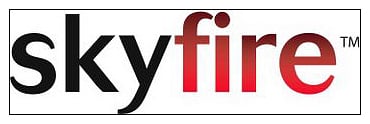
Skyfire is making available today the latest version of its browser, version 0.9, for Windows Mobile and Symbian. Just point your mobile or desktop browser to http://get.skyfire.com and Skyfire will detect your phone model and provide you with the appropriate installer. Skyfire is recommending you uninstall previous versions of Skyfire before you install version 0.9.
Skyfire is still in Beta form but has improved from the previous Beta release. Version 0.9 Beta now supports all regular screen resolutions available for Windows Mobile devices as well as wide-screen formats. A few other new additions include the inclusion of Facebook and Twitter on the Skyfire start page, improved text readability, an improved superbar, downloadable media that allows you to download freely accessible media files to your phone, and updated plug-ins to include Flash 10, Silverlight 2.0 and the newest Quicktime version. Read on after the break for our initial thoughts on this new release and a few screen shots.
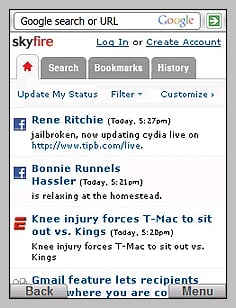
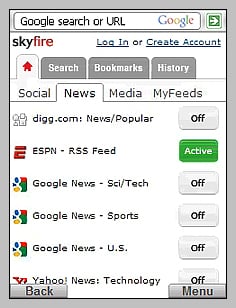
We've been running the beta for a little while now. And as a Beta application, there's still a good bit of work to be done. Installation on the AT&T Fuze was uneventful, and I liked the overall feel of Skyfire, especially the addition of Twitter and Facebook on the Home Page. The home page for Skyfire displays customizable content feeds from the Internet. The feeds are updated periodically and sorted in chronological order. Users can add RSS feeds to the home page as well as filtering the home page's content. The home page is tabbed to make access to Search, Bookmarks, and History functions.
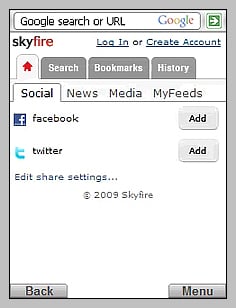
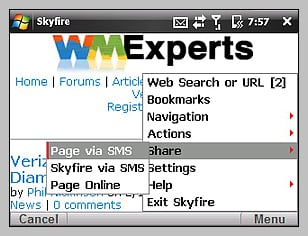
It's hard to escape the grasps of Twitter and Facebook these days and it is nice to have integration with these two social networking services on the home page. I can update my status as well as see the status of my friends as it changes from Skyfire's home page. If you aren't a connoisseur of Facebook or Twitter, these features can be disabled. One more nice tie in with Twitter and Facebook is that you can share web pages directly with your Facebook/Twitter contacts.
The navigation controls are at the top and bottom corners of the screen. My only concern with the buttons is that at times they were hard to tap due to their size and possibly due to the location on the screen. Sometimes the corners can be the hardest areas of a touchscreen to get a response out of. Combined with the smaller buttons, I found it challenging at the time to get a response with the first tap. One last observation on the navigational controls is that at the bottom left you have a button that serves as the "Back" function but when you've zoomed in on a page, it changes to a "Zoom Out" button. If you're not careful and tap it too many times to zoom out, you'll end up backing up a page. Web pages are touch scrollable and responsive. I did notice that with the larger/longer web pages that when you came closer to the end, the refresh rates slowed. This is noted by Skyfire in its release notes and is something that is being addressed by developers.
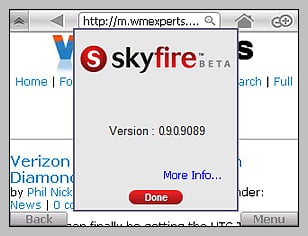
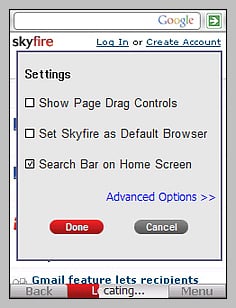
One feature of Skyfire 0.9 Beta that show a lot of promise is the media connection. Skyfire now has the ability to launch the media player for formats such as Windows Streaming audio to enable you to stream radio feeds in the background while continuing to surf the internet. If you find a freely accessible file to your liking, you can now download it to your phone. In reading the release notes and for the short time I've had to use Skyfire 0.9 Beta, the company is pushing to put as much functionality into your mobile browser as your desktop browser has.
It was a very stable Beta application and while I didn't experience any crashes, there were a few performance issues present. Page load times were noticeably slower when compared to other browsers. I used Skyfire with both 3G and WiFi connectivity and the upload speeds were four to eight seconds slower than Opera Mobile and Explorer. Another Beta bug occurs when using the touch screen to zoom, text is inadvertently selected. I also noticed that the refresh rate after zooming is also noticeably slower. When you zoom into an area of a page, the enlarged image is somewhat pixelated and refreshes itself to a better resolution. Again, keep in mind that this is a Beta release and Skyfire is a work in progress.
All the latest news, reviews, and guides for Windows and Xbox diehards.
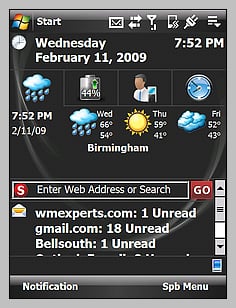

Skyfire does come with a Today Screen search plug-in similar to what Windows Live, Yahoo, and Google provide. Transitioning from the Today Screen to the Skyfire browser is a bit on the slow side. And that's how I would have to describe the latest Beta version of Skyfire; slow.
The features and design of Skyfire have potential. But until it can get a little more zip to it, the comparison to other browsers will be like comparing dial-up to broadband. As the Beta development progresses with Skyfire, one thing is for certain; between Internet Explorer, Opera Mobile, Fennec (soon) and Skyfire, the choice of Windows Mobile browsers might be a tough one to make.
To give Skyfire 0.9 Beta a test drive, just point your mobile browser to http://get.skyfire.com (remember to uninstall any previous Beta versions before you install version 0.9) and tell us what you think in the comments.

George is a former Reviews Editor at Windows Central, concentrating on Windows 10 PC and Mobile apps. He's been a supporter of the platform since the days of Windows CE and uses his current Windows 10 Mobile phone daily to keep up with life and enjoy a game during downtime.
